12th c. A.D. Mumbai & Kalikata (Calcutta) styles Devanagari Sanskrit
Gold and 18k gold enamel paint.
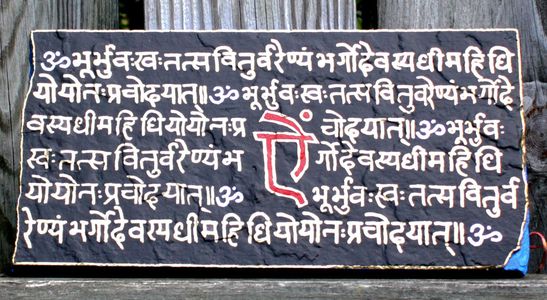
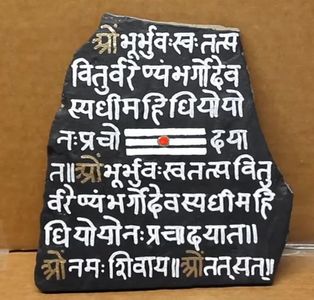
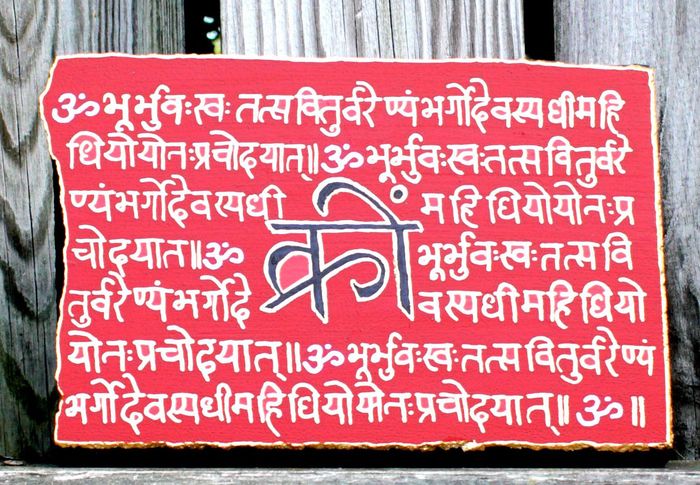
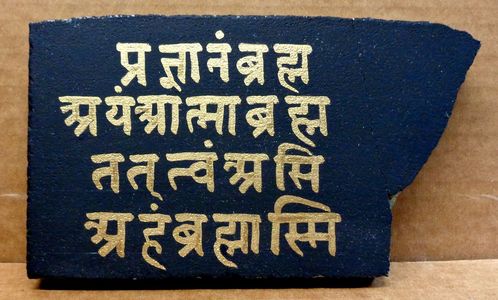
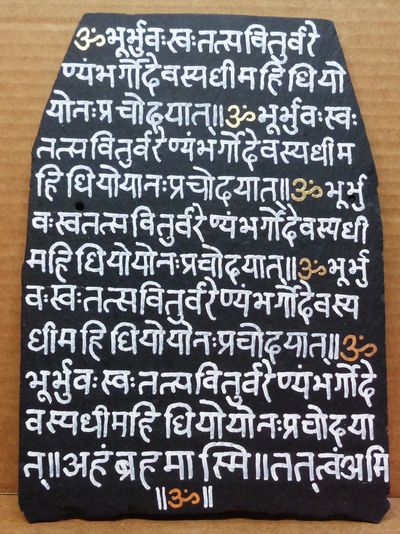
slate from original 1865 roof of A.D. White House,
Cornell University
Brahmi is the first written form of Sanskrit,
created by the Jain teacher Tirthankara Rishabhanatha.
No examples of the Rig Veda in Brahmi have survived, but Sanskrit scholar
Vinodh Rajan re-created the Gayatri Mantra for me in Brahmi script in 2020.
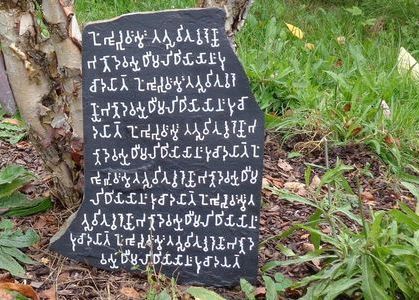
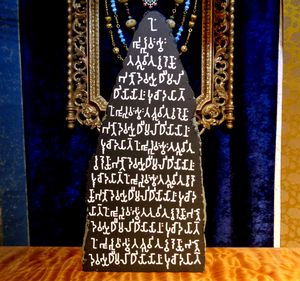
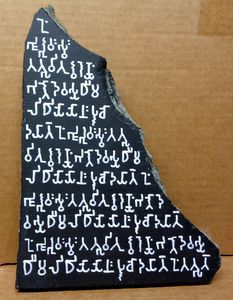
~ Gayatri Rocks: Mantra in
modern
Tamil Script ~
Tamil is the birth language of Sri Ramana Maharishi.
Ramana was born in the Indian state of Tamil Nadu.
Arunachala, Ramana's eventual home, is also located in Tamil Nadu.
The rock is a slate piece from the original 1865 roof of the Andrew Dickson White House on the Cornell campus.
A.D. White was Cornell University's first president.
Tamil is the birth language of Sri Ramana Maharishi.
Ramana was born in the Indian state of Tamil Nadu.
Arunachala, Ramana's eventual home, is also located in Tamil Nadu.
The rock is a slate piece from the original 1865 roof of the Andrew Dickson White House on the Cornell campus.
A.D. White was Cornell University's first president.
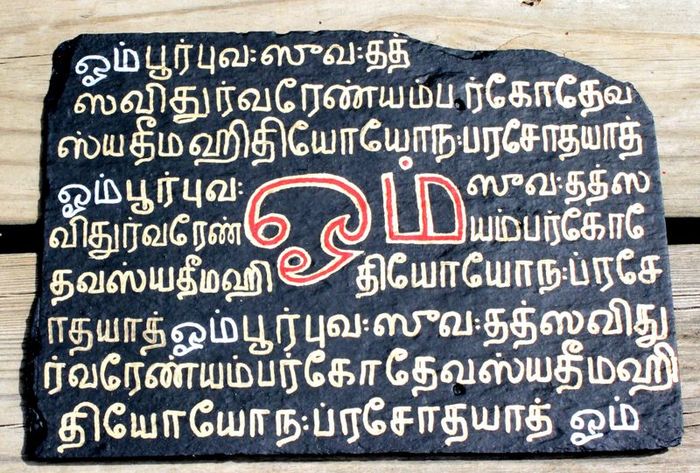
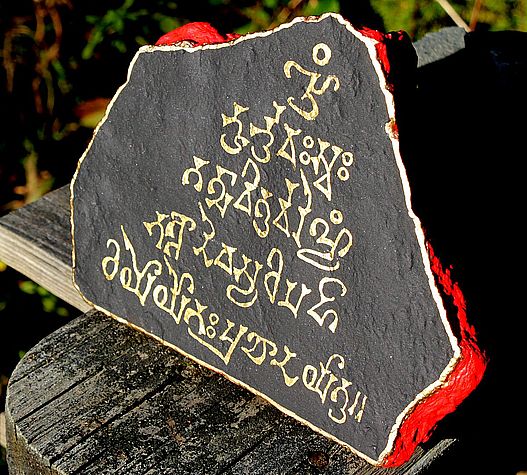
Gayatri Rocks: Mantra in Gupta Script
~ (6th c. A.D. style) ~
Although no examples of the Rig Veda in Gupta have survived, Sanskrit scholar Daniel Balogh re-created the Gayatri Mantra for me in Gupta
script in 2021, based upon the style of the 533 A.D. Mandsaur
stone inscription. I then studied the 515 A.D. Risthal stone and the
Mandsaur stone with the Sanskrit-English transliterations to
finalize my letter styling choices.
The
Gupta Empire is regarded as the "Golden Age of India." This
period featured extensive inventions and discoveries that impacted
the
entire world in science, technology, engineering, poetry,
art, literature, logic, mathematics, astronomy, and
philosophy.
The
Tibetan written language, created by Thonmi Sambhota, who was sent to India in
the mid 7thc. A.D. by Tibetan King Songtsen Gampo, specifically for this
purpose, is based upon the Gupta script.